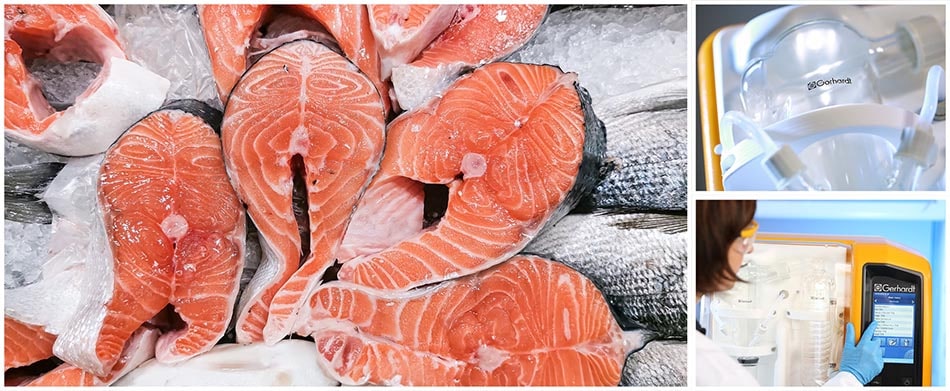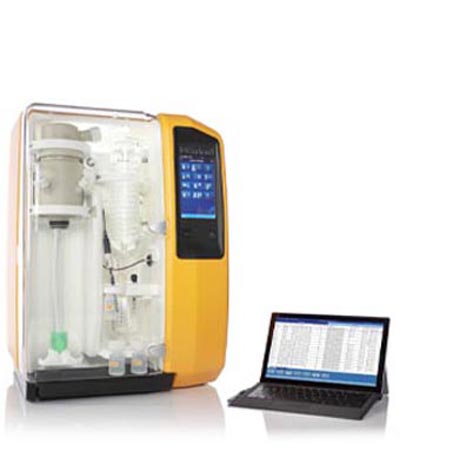Introduction
Sensory tests (smell, taste, appearance), microbiological methods and chemical methods are suitable for determining the quality and freshness of fish products and seafood. An essential chemical parameter for quality assessment is the TVB-N content (total volatile base nitrogen) of fish for the determination of ammonia, dimethyl- and trimethylamine. These substances are mainly responsible for the spoilage of fish and seafood and cause fish to have a strong and unpleasant smell. Especially in the case of ocean fish and seafood, the TVB-N value is an important indicator to determine the degree of freshness, as these in particular form basic nitrogens during decomposition. As fishery is now a global industry where fish and seafood are transported over long supply chains, a reliable analysis to determine TVB-N levels is essential in the context of food safety. With the VAPODEST 500 distillation system and the application "TVB-N in fish and fish products", the analysis can be carried out fully automatically.
TVB-N determination in fish products
Sample preparation:
A representative average sample is crushed and homogenised. The further processing of the fish in the context of the analysis should now be done quickly so that the fish does not continue to age.
Weighing + addition of the acid:
The sample is weighed into a beaker and perchloric acid is added.
- App note: The acid must be added quickly!
Homogenisation:
The suspension is homogenised for 1 to 2 minutes.
- App note: It is very easy with a hand blender in a beaker.
Filtration + sample transfer:
The sample is now separated from the free basic nitrogen compounds (TVB-N). The following accessories are particularly suitable for filtration: height-adjustable filtration rack, DIN 12445 funnel and HYDROTHERM folding filter. Then 50 ml of the filtrate is transferred into a distillation glass.
- App note: As the samples foam particularly strongly, jumbo digestion flasks 1,200 ml and defoaming reagents should be used.
Distillation:
The filtrate is now automatically alkalised and the free basic nitrogen compounds are separated from the filtrate and collected in the boric acid.
- App note: Check the pH value of the filtrate at the beginning to make sure that enough base has been dosed.
Titration + Calculation:
The TVB-N has increased the pH value of the boric acid and is now titrated back to the turnover point of the indicator or titrated to the initial pH value with a pH meter. With the consumption of the measuring solution, the TVB-N content can now be determined.
- App note: This step can be automated from a VAPODEST 450 up to a VAPODEST 500 C.


